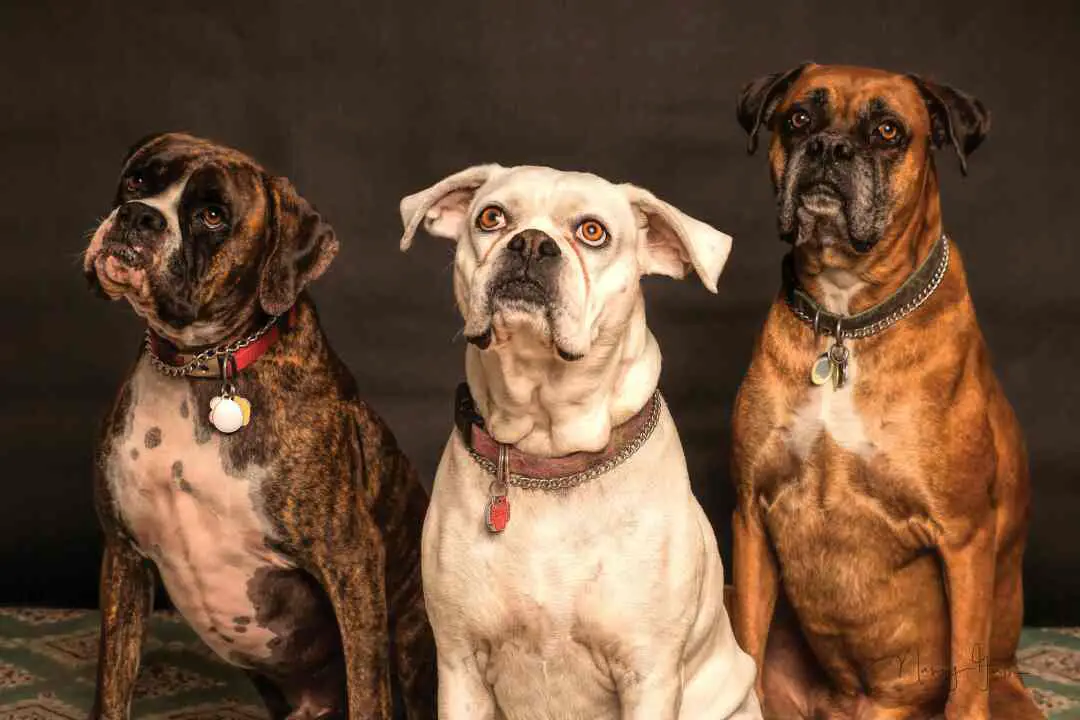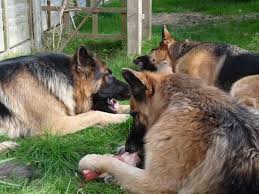Can Dogs Get Pimples
Dogs are the most loyal creatures which love to be around their caretakers every time. Similarly, the dog owners care about their dogs from their head to tail. They look after all the changes happening in the dog’s body. This is more common if someone adopts a new puppy for the first time. In this article, let’s look at one of those physical change which usually occurs on dog’s body- Pimples and acne. Let’s deep dive into this topic and discuss this in detail.
Pimples Vs Acne Vs Zits in dogs
Acne is a damaged skin condition, whereas pimples and dog zits are symptoms of this condition.
Acne vulgaris is an infectious skin condition that includes changes to the pilosebaceous units which contains the hair follicle and its related sebaceous organ.
The principal use of sebaceous glands is to create oil called sebum. Sebum secures the hair and keeps the skin tough. Pimples create when oil from the sebaceous glands and dead skin cells or bacteria combine to plug the hair follicles.
Despite the fact that zits and pimples describes all sorts of acne, the most inflammatory issues about acne are papules and pustules. These two kinds of acne complications develop when bacteria, oil, and dead skin cells are driven deep into the skin.
Do dogs get pimples?
Acne in dogs is caused by exactly the same things that cause human acne. Dog fur follicles are the same as our hair. Inflammation in the follicle, bacteria, or hormonal changes can make sebum overproduce. As sebum couldn’t flow out of the sebaceous glands, the oil (sebum) mix along with bacteria or dead skin cells, making the area clogged and sore from the outside of the hair follicle and get infected. Ultimately, the skin breaks or the clog ruptures, allowing the contents of the zit to drain.
The dog body’s natural response is to release the white blood cell into an area where the bacteria are trapped in the hair follicle. This creates a nasty puss that can overflow from the pimples.
Dogs can develop various types of zits including whiteheads, blackheads, or enclosed pimples. These all develop due to the same reason as discussed above. But, they may differ depending upon the amount of follicle clogged and the depth of the clog.
Symptoms:
- Itching: pawing at the face or rubbing face against the carpet/furniture
- Little red bumps on the chin, lips, and muzzle
- Pus-filled lesions
- Blackheads
- Swelling
AVMA has made a study in which that relates the skin allergies in dogs could affect dog’s mental behaviors.
Why do dogs get pimples?
Acne is a normal thing in the adolescent period of a dog’s lifecycle. So a few breakouts will happen even though the caretaker tries their best to prevent it. It may be related to an allergic reaction to a food or product, bacteria, hormonal changes, or poor hygiene.
1. Age
Dogs are affected by acne during their adolescence. Despite it can happen whenever in their life, many dogs that are subjected to acne during their childhood will continue to face it after they are aged.
2. Poor Hygiene
Dirt and untidy environmental conditions can affect your dog’s follicles and develop acne. To avoid, regularly wash your dog to keep them clean. Note that poor doggie dental cleanliness may lead to acne. So, make sure to brush your dog’s teeth and feed her a tooth-cleaning bite treat or kibble. This will prevent premature zits and bacterial contaminations in and around the mouth.
3. Friction
Friction can improve the probability of follicular disturbance, which can cause pimple formation. This may emerge from things like poorly sized collars. To avoid this, make sure to use collars of the appropriate size for your dog and often check the area under collars.
4. Allergies
Pimples can be a sign of food, chemical or environmental allergies. Many new packed food items seem to be attractive and cheap. But, they might be made up of poor and unhealthy ingredients which might cause pimples in dogs. Especially food items containing expired seafood by-products etc.
5. Hereditary qualities
According to veterinarians, certain varieties have a hereditary resemblance to skin conditions that may make them more prone to acne.
6. Injuries
Canine acne can be due to skin injuries. A skin injury can make hairs near the skin’s surface fall off, inflammation near the hair follicle and cause rupture of the hair follicle. At the point when the hair follicle ruptures, its substance is delivered into the surrounding skin. This makes further irritation inside the skin. At the initial phase, the inflammation in canine acne is usually clean. But, bacteria can occupy the space around this skin cause further infection and medical complications.
Body parts exposed to acne?
Dogs of all ages can have pimples, which are typically focused on the dog’s chin, lips area and also on the dog’s belly.
1. Pimples on Dog eyelids
The skin covering the eyelids may have dry crusts or flakes and small papules or pustules. In most cases, pimples on a dog’s eyelids could cause the meibomian glands to swell. Meibomian glands help to lubricate the eyes along the edge of the eyelid.
If the swelling is not painful or causing redness in the dog’s eye then it couldn’t be a serious complication. It will be cured in a short span of time.
2. Pimples on Dog toes
Interdigital cysts are a progression of frequently infected tissue between your dog’s toes. They are found on the front paws and can be an aftereffect of various skin conditions. These can range from mites to ingrown hairs to allergies, It will be very painful for your dogs to bear. There are many medical ailments which could help your dog to recover from these type of pimples.
Small pimple with white pus in them is generally a sign of a bacterial skin disease called pyoderma. This can happen all alone or because of an underlying issue. For example, sensitivities or skin damage. If they don’t trouble your dog then try soaking the affected paws in warm water with Epsom salts for 5 minutes. Do this two times every day – regularly, this will assist in curing this disease.
In case the bumps appear to spread or assuming they become irritated or difficult, consult a Vet. They provide anti-biotic ointments to treat skin infections. They do some basic tests to check if there are any underlying issues that are causing this issue.
3. Pimple on dogs ear
Dogs might have ear dermatitis which is a serious level of allergy or pimples. Over irritation and the resulting pain can be a constant disturbance. Make sure that your dog’s ears are free from germs if they go outside frequently. Clean your dog ears with mild-warm water periodically.
4. Dog pimples on belly
AKC has mentioned the causes and treatment for the rashes which usually occur on a dog’s belly.
Rashes on dog belly may look disturbing and awkward, yet they are very normal. These rashes can have a variety of causes, from a bacterial skin infection to a more genuine basic condition, like Cushing’s illness. Cushing illness or Hyperadrenocorticism is usually due to the tumor in the pituitary glands of your dog.
Treatment for this disease is expensive but it could be treated to cure this disease in dogs.
Commonly affected dog breeds due to pimples:
Dog breeds that are susceptible to acne:
- English bulldogs
- Mastiffs
- Weimaraners
- Rottweilers
- Dobermans
- Pugs
- Boxers
- Great Danes
- Pit bulls
- American Staffordshire terriers
Dog acne treatment:
A few infections that appear like acne are:
- Demodicosis — A sort of mange
- Ringworm — Early on, the infection can look like acne.
- Puppy Strangles — A skin problem that affects dogs mostly between the ages of 3 weeks and 4 months.
- Regardless of the treatment, the important rule to follow is don’t pop your puppy’s pimples! Pressing the pimples on your dog’s face will make the hair follicles crack and worsen the issue.
- Your dog hates to wear an Elizabethan collar and you would rather not see him wearing a collar. These collars are necessary only when a dog frequently scratches an area. The truth is that skin infection under that area of the collar can’t heal if your dog keeps wearing it always. This will break the skin and introduce all kinds of dirt and bacteria in that affected area.
- The most widely recognized treatment for canine acne is skin benzoyl peroxide. This item assists with flushing out the hair follicle and lessens bacterial infection. In most cases, benzoyl peroxide alone might be adequate to cure canine acne. In more serious cases, using benzoyl peroxide over a longer period might be useful to stop the further growth of acne or infection in your dogs.
- Steroids can be used to diminish infection inside the skin. Oral steroids may contain prednisone or prednisolone. However, effective steroids have betamethasone or fluocinolone. Few dogs may react to an effective anti-toxin. For example, mupirocin, which diminishes bacterial growth depends on the skin.
- In case the pimples are severely infected, your veterinarian may recommend anti-microbial ointments for the skin. Oral antibiotics are given for four to eight weeks, based upon the seriousness of the infection.
- Visit your nearest pet store to find an antibacterial or sedated cleanser meant for dogs. Dog shampoos that contain aloe vera or echinacea are particularly useful in treating skin issues. Wash your dogs with items made for dogs. Since shampoos, creams, and treatments meant for humans are harmful to dogs. Be careful to see whether the cleanser you are using could cure the pimples. Many of these items can worsen the pimple or cause unexpected issues in certain dogs.
- Are you searching for some natural effective solutions for dog acne? Then, a combination of the below ingredients could fit for you,
1. Coconut Oil
2. Aloe Vera
3. Diluted Apple Cider Vinegar
Apple juice vinegar is extraordinary for its antibacterial properties. Yet, should not use on open skin, as it will sting.
How to prevent pimples in dogs?
- Dark, wet spots are the ideal surroundings for bacteria to spin out of control. Attempt to keep your dog’s muzzle dry to reduce bacteria populations.
- Offer plenty of water for your dogs to drink. Especially, during the summer season when they are more prone to sweat and infection.
- Keep a dry towel helpful to wipe his face after he eats. This is particularly helpful for extra drooly dogs.
- The bacteria in your dog’s mouth can undoubtedly move to his nose and gag. Once more, this is particularly obvious with drooly breeds. Stop the entry of oral bacteria by brushing your dog’s teeth regularly.
- Choose dog beds that have removable, launderable covers that can be cleaned.
- Regularly clean bowls as well. Plastic bowls have a huge amount of bacteria than bowls made of glass, fired, or metal. Minuscule cuts, scratches, and breaks are good spots for bacteria to cover up and develop. So, ditch the plastic dishes and change to something tougher.
Acne is mostly expected during the dog’s lifecycle. Particularly, if they are in the childhood phase. Many cases are common in young adult dogs, but if there seems to be a large outbreak or bleeding then it may because of concern. The most you can do at home is keep the dog clean through normal washing, good dental cleanliness, and the use of a sedated cleanser. Any other queries or you like to know about other effective treatment options then please consult your Vet for better guidance.






